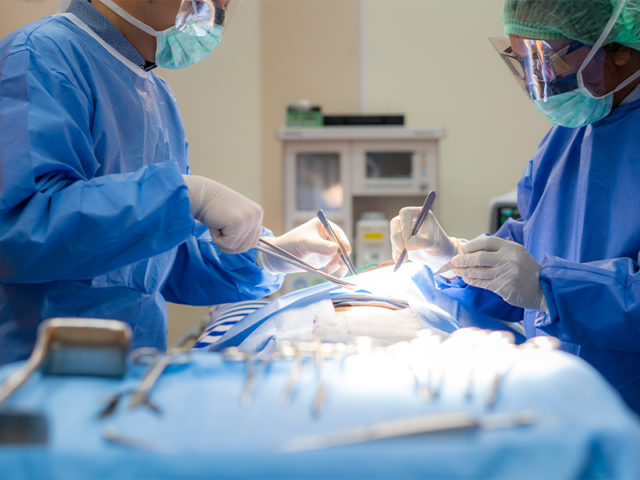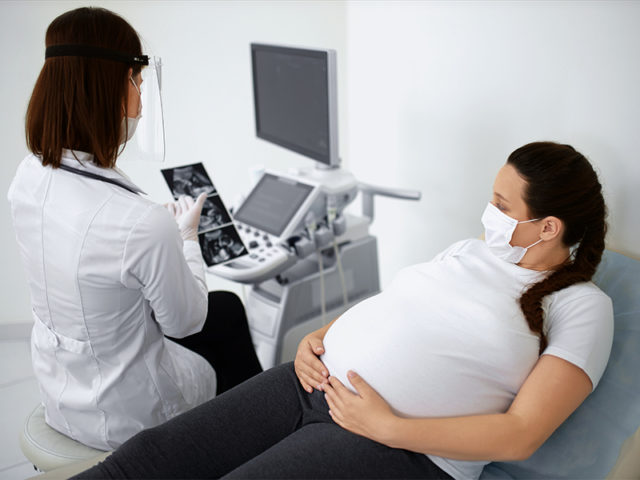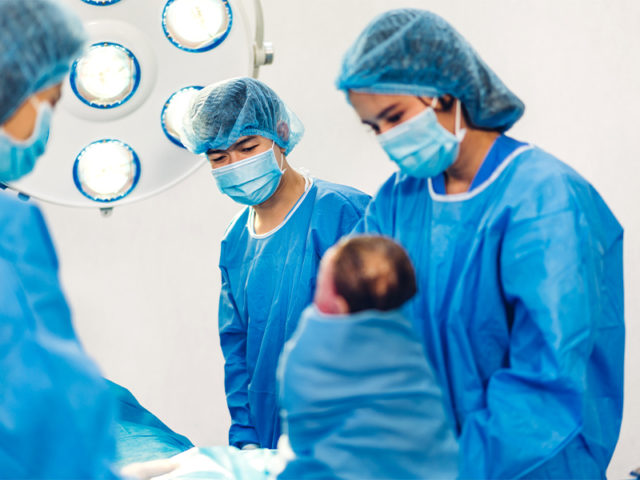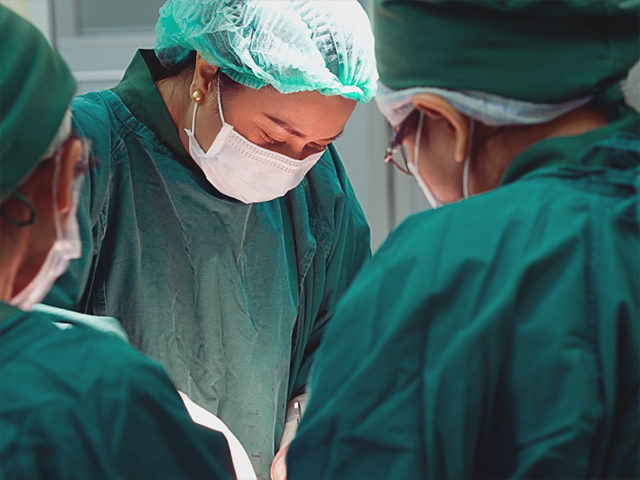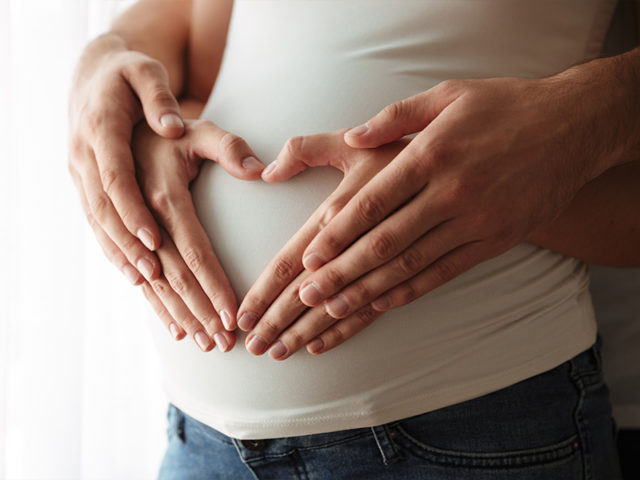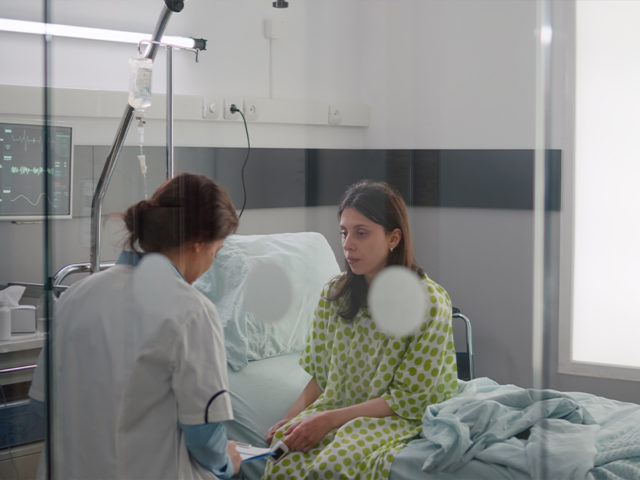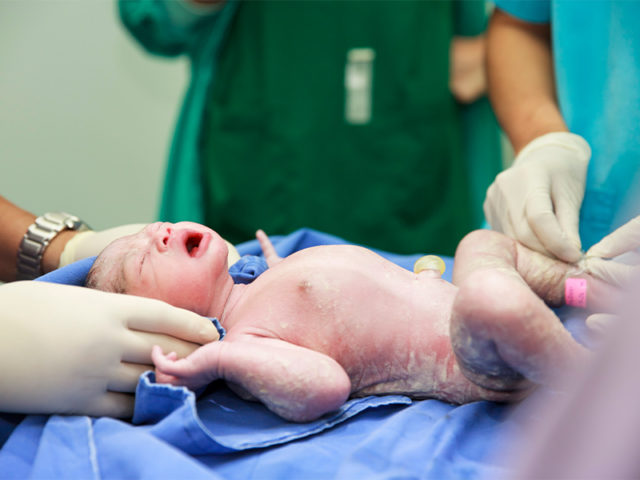Dia Mirza‘s and Vaibhav Rekhi’s son Avyaan was born on 14th May 2021 prematurely. Thanking the medical staff who took care of the little one, Dia took to social media writing, “These words perfectly exemplify Vaibhav & my feelings right now. Our heartbeat, our son Avyaan Azaad Rekhi was born on May 14th. Having arrived early, our little miracle has since then been cared for by tireless nurses and doctors in the Neonatal ICU. A sudden appendectomy during my pregnancy and a subsequent and very severe bacterial infection could have led to sepsis and proven to be life-threatening. Thankfully, the timely care and intervention by our doctor ensured the safe birth of our baby via an emergency C-section.”
This incident, like many others, opened the conversation about the surgical method and its complications. Every pregnant woman hopes for a short labour and delivery with no complications — manageable contractions, some pushing, then a beautiful baby. However sometimes due to medical reasons, babies need to be delivered via cesarean section (C-section).
TC46 connected with Dr Sushma Tomar, Consultant Obstetrics & Gynecology, Fortis Hospital Kalyan & Dr Neha Bothara, Obstetrics & Gynecology, Fortis Network Hospital to answer all the queries regarding C-Section.
1. C-section is an operative procedure
Dr Sushma Tomar explains, “Cesarean section is an operative procedure, where the abdomen and uterus are cut under anaesthesia to deliver the baby. This procedure is done when normal delivery is not possible because of any reason. Gynaecologists make a decision whether the patient can deliver normally, or if C-section is needed. Anaesthesia must be given by an Anesthetist; then the Gynecologists commence the surgery.
Procedure:
- First, the abdomen is opened in layers; either lower abdomen transverse incision or below umbilicus midline incision is given.
- Then the uterus is opened in the lower segment with a transverse incision, and the baby, cord, and placenta are delivered.
- Afterwards, the uterus and abdomen are closed in layers.”
2. Indications of C-section
Dr Sushma Tomar says, “Indications for the C-section are many.
Maternal indications:
- Previous LSCS for what reason it was done
- Cephalopelvic disproportion – where pelvic space is less in proportion to the baby’s head
- Cervical Dystocia – where even after good labour pains, the uterus mouth is not opening
- Maternal distress as she is not able to tolerate labour pains and is exhausted
- Toxaemia of pregnancy
- Antepartum haemorrhage
Fetal indications:
- Fetal distress where the baby’s heartbeat is irregular, movements are less, the baby has passed motion inside the uterus
- Mal-positions such as transverse position, breech position, oblique positions
- The size of the baby is big compared to the mother’s pelvic
- Multiple pregnancies
- Abnormal placenta position
C-sections have to be done for the benefit of the mother and the fetus. Surgical time is variable, depending on the surgeon’s experience and an indication of LSCS, it can be half an hour, in complicated cases even two hours.”
3. Emergency C-section
Dr Sushma Tomar informs, “Emergency C-sections are which were not planned before, and sudden delivery has to be done to save both the mother and the child; like fetal distress, profuse bleeding per vagina, Eclampsia, malposition, previous LSCS scar tenderness or impending scar rupture, bad obstetric history, maternal exhaust, IUGR, multiple pregnancies where the fetal position is not normal.”
4. With good anaesthesia & surgical team, complications are minimal
Dr Sushma Tomar says, “Nowadays, the risk for mother and child in registered patients who are under gynaecologist observation for the whole 9 months is very less. Their haemoglobin is maintained, blood pressure is also under control.
Anaesthesia related complications and surgical complications are – excess bleeding during surgery. Post-surgery infection may also arise. In today’s era, with good anaesthesia and surgical team, complications are very minimal.
In today’s scenario, side effects are very less. Still, you can have fever, infection, excess blood loss, injuries to other organs and anaesthesia-related complications.”
5. Parent’s preparation for C-section
Dr Sushma Tomar says, “A parent’s preparation depends on whether it is a planned C-section or an emergency C-section. Accordingly, your gynaecologist will advise what preparation you must do.”
6. Good hydration, healthy diet to ensure a smooth recovery
Dr Neha Bothara says, “The care after a cesarean section is the same as that which has to be taken after any major surgery. But, it is additionally difficult because the new mother also has to care for her newborn baby. Adequate rest, allowing yourself to heal, making sure you take good hydration, and a healthy diet, is necessary to ensure a smooth recovery. No heavy exercises or heavy work is permitted for three months post-surgery to ensure good healing of the wound.”
7. Stay in the hospital post-surgery
According to Dr Neha Bothara, “The stay in the hospital post-surgery can vary from patient to patient, and also on the condition and progress of the baby. But if all is well, the mother and baby are usually discharged together at about 48-72 hours after delivery. Doctors make sure that the mother is comfortable and that her pain relief is good, she is breastfeeding the baby adequately, and that the baby has also received a go-ahead for discharge from the paediatrician.”
8. Maintain atleast a 2-year gap between two pregnancies
Dr Neha Bothara says, “After a cesarean section, the internal and external surgical wounds need to be given adequate time to heal. If another pregnancy grows within the womb before the surgical scar is strong enough, there is a possibility of some complications. There is no set criterion, but the general advice is to space two pregnancies by at least two years.”
9. Success rate of vaginal birth after cesarean section is 70-85%
According to Dr Neha Bothara, “The decision for a cesarean section during the next childbirth depends on a lot of factors. The most important factor is the reason for which the first caesarean was done and if the same conditions are repeating, or likely to repeat in this pregnancy. After a previous cesarean, a trial for normal delivery can be done under strict surveillance during labour, and only if all the necessary criteria are fulfilled. The success rate for VBAC (vaginal birth after cesarean section) is about 70-85% depending on the individualities of each case. But there might also be select patients in whom it might not be advisable.”
10. Coping with the distress of C-section
Dr Neha Bothara says, “Undergoing a major surgery after nine months of carrying a pregnancy can be distressing. This can additionally be coupled with post-partum hormonal blues and can be daunting for the mother. Also, many women might have their hearts set on normal delivery and might be disappointed with having to undergo a cesarean section. Surgical recovery and pain might also add to the emotional distress. Talking to one’s family and friends during this time will be very helpful. Discussing what you are going through will be very helpful. In situations when mothers feel that they are not able to cope with the stress of postpartum, they can consider seeing a counsellor too.”


